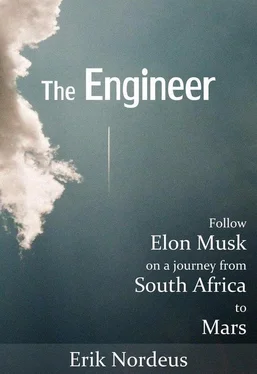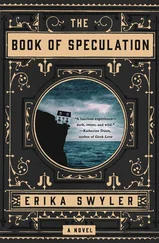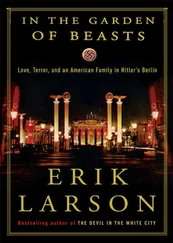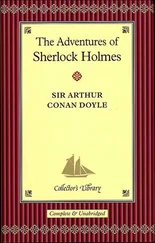Launching a Truck Into Space
SpaceX set out to build the cheap and reliable T-Ford rocket. The Falcon Explorer was the result of their hard work, but they would later change the name to Falcon 1. As the number 1 indicates, the Falcon 1 would be the first in a series of rockets named after the spacecraft Millennium Falcon from the Star Wars movies. 299The main character in the first trilogy, Luke Skywalker, called the ship “a piece of junk” when he first saw it. “The ship may not look like much, but she’s got it where it counts,” the captain of the Millennium Falcon , Han Solo, told Skywalker.
Neither Falcon 1 looked like much. SpaceX designed the rocket to have the same performance as a reliable truck. “Think of cars, is a Ferrari more reliable than a Toyota Corolla or a Honda Civic?” Elon asked. “Current rockets are designed to have ultra-high performance, often to the point of far exceeding the thrust needed to get the job done. Right now, a lot of rockets used to launch satellites are former missiles. The way the launches work, it’s as if when you boarded a commercial jetliner you knew that should any of the engines fail, you’d crash and die. Would you get on board?” 288,289,311
But it wouldn’t be cheap to design the truck. SpaceX needed much of the initial capital together with government funding – approximately $100 million. 280The total number of employees were now 150 SpaceXers.
While the Saturn V from the Apollo program was a three-stage rocket, the Falcon 1 had only two stages. You split a rocket into stages to save weight. After the launch, and when the first stage has run out of fuel, it will separate from the second stage and fall back to Earth. The engines attached to the second stage will now start and power the rest of the rocket up to space. While the first stage of the Falcon 1 rocket had a speed of 6850 mph [11 000 km/h], the second stage had a speed of 17 000 mph.
To find the engines needed to power the rocket, Elon contacted Tom Mueller. He was a member of the Reaction Research Society – a group of amateur rocket enthusiasts. They launched rockets on a dry lakebed at the edge of the Mojave Desert. But Mueller was no amateur. He had joined the group to do all the crazy stuff he wasn’t allowed to do at his job as a rocket engineer. 278
Mueller’s life story resemble the same story as shown in the movie October Sky . The movie tells the true story of Homer Hickham, who grew up in a coal mining community. Hickham was inspired by the launch of the Russian satellite Sputnik 1 and decided to become an engineer despite his father’s negative thoughts. His father wanted him to become a coal miner, but Hickham didn’t listen to him and would eventually become a NASA rocket scientist. The only difference from the movie is that Mueller grew up in the small logging community St. Maries, Idaho.
The young Mueller built and flew hobby rockets. “I’d buy them at the local hobby shop,” he said. “I made dozens of those things. I had them hanging above my bed and on the shelves around my bed. Of course they didn’t last long because I’d always lose them or crash them or blow them up or something.” One of the rockets carried a load of crickets. Mueller wanted to see the effect of acceleration on the unsuspecting creatures. 317
Mueller’s dream was to become an aircraft mechanic. But during his first year in high school, his math teacher asked him why he didn’t want to become an engineer. Why was his dream to be the one who fixes the plane and not the one who designed it? “If it hadn’t been for that math teacher, I probably would have been a mechanic or a logger,” Mueller said. “Thanks to him, I got the right courses to go to college. And instead, I went off to be an engineer.” 318
After a brief visit to California, Mueller knew he one day would come back and work with rockets. But first he needed to attend engineering school. During the summer breaks, he worked as a logger. The work was exhausting. “I knew that I did not want to do that for the rest of my life,” Mueller said. “Because that was the alternative – I either get through college and become an engineer or I’m going to become a logger like the rest of my family. That was very, very motivating. I’d be out there in the bugs and the sticks working and sweating all summer. And I’d just think about, when I get back to school, I’m going to study so hard.” 317
After graduation, Mueller moved to California and began working for TRW. Founded in 1901, TRW had worked on the first American ICBM and the engine for the Apollo lunar lander that helped Neil Armstrong and the other astronauts to land on the Moon. Mueller had now designed a prototype rocket engine in his garage. One day, he got a telephone call from a space entrepreneur.
“How much do you think we can get the cost of an engine down, compared to what you were predicting they’d cost at TRW?” Elon asked.
“Oh, probably a factor of three,” Mueller replied.
“We need a factor of ten,” Elon said. 288
Elon asked him if he could get the prototype engine to fly. Mueller replied that he could if he had a team with skilled engineers. Elon hired him and Mueller decided to leave his job at TRW. “I had several other opportunities, but when Elon approached me I could see he was different,” Mueller said. “The others always had a gimmick, like a helicopter blade or some miracle technology. Elon just wanted to take the best technology already out there, build a simple vehicle and use the right propellants.” 307
For fourteen years, Mueller worked for TRW and can now compare the differences between TRW and SpaceX. It took him and 80 other engineers five years to design an engine intended for the Delta IV rocket, but Boeing decided to choose another engine. All the money and resources used to develop the original engine were wasted. “I can’t think of anything I was responsible for at TRW that ever flew,” Mueller said. 71
At SpaceX, Mueller developed a rocket engine together with a team of only 25 engineers. They got the cost of the engine down by a factor of ten, as Elon had demanded, but it was a difficult challenge. “I don’t know if there’s a single thing in that engine that has worked,” Elon said about the early prototypes of the rocket engine. “Where do I start? The turbo pump has been difficult, the thrust chamber assembly’s been difficult, and all the little stuff in between has been difficult, too.” 301
Known as the Merlin, the engine developed by Mueller’s team became the first rocket engine produced by an American company in 10 years and the second rocket engine in 25 years. It seems probable that the name originates from the bird Merlin – a small species of falcons. “The Merlin is much more analogous to a truck engine than a sports car engine, which is how all other engines are designed,” Elon said. “Instead of designing it to the bleeding edge of performance and drawing out every last ounce of thrust, we designed Merlin to be easy to build, easy to fix and robust. It can take a beating and still keep going.” 303
The Merlin is not an engine that cares about the environment, but that’s not an issue. “You know, rockets contribute, essentially, 0.000001 percent of CO 2or other emissions,” Elon said. “And unfortunately, you really need to burn chemical propellants to get out of Earth’s gravity. There’s no other way to do it.” 4An electric rocket creates thrust by accelerating beams of ions. These rockets are efficient, but the amount of thrust they produce is very small compared to the amount produced by chemical propulsion. Because of the low thrust, you can’t use ion thrusters to launch a spacecraft into orbit, but ion thrusters are ideal for propulsion when the spacecraft is in space. 294
Читать дальше











